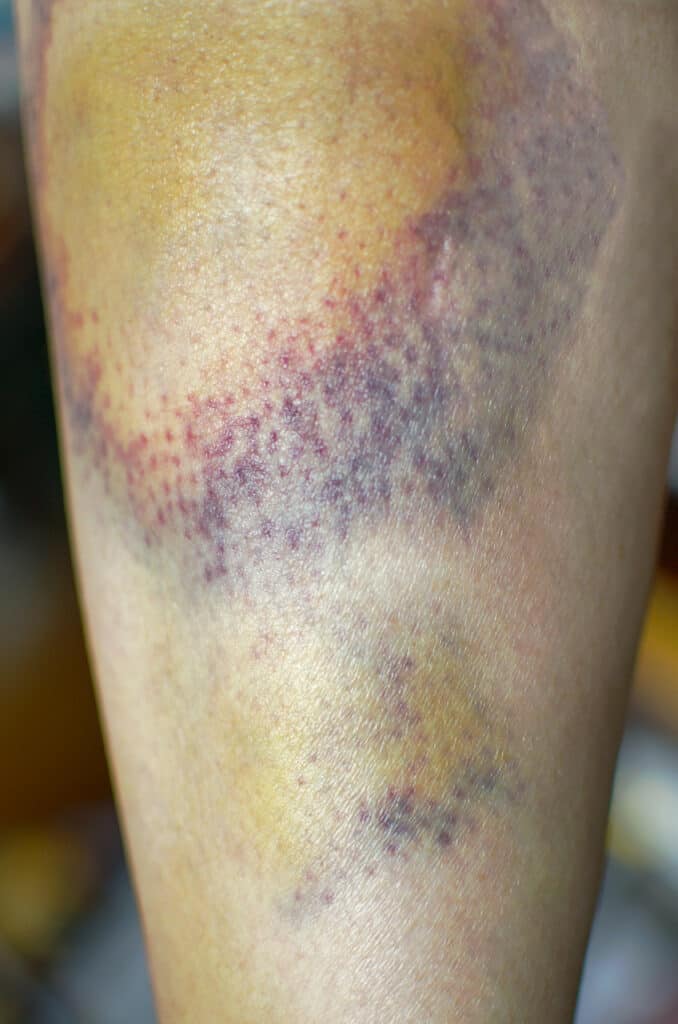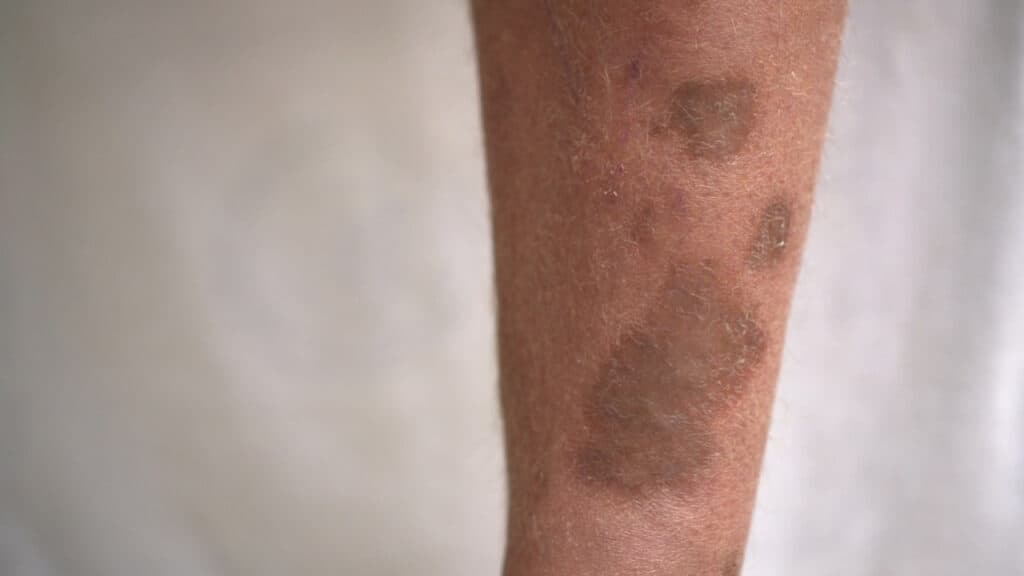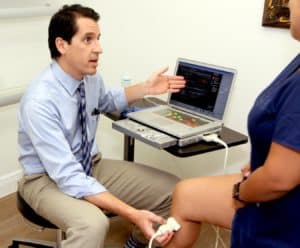Are you experiencing a persistent wound on your leg that just won’t seem to heal? It could be a venous ulcer, a common condition that affects millions of people worldwide. Despite its prevalence, many individuals are unaware of what venous ulcers are and how to properly treat them.
Venous ulcers are a type of chronic wound that can develop as a result of poor circulation in the legs. They can be painful, unsightly, and can significantly impact a person’s quality of life. Unfortunately, many people suffering from venous ulcers are not receiving the appropriate treatment they need.
In this blog, we will explore the truth about venous ulcers and how to get proper treatment. We will discuss the causes, symptoms, and risk factors of venous ulcers, as well as the various treatment options available. With the right knowledge and care, you can heal your skin and improve your overall well-being.
What Causes Venous Ulcers?
Certain factors raise the likelihood of developing venous ulcers. These include the following:
- Age: With age, veins, particularly on the lower leg, lose elasticity and weaken. This may result in blood pooling that eventually leads to venous ulcers developing.
- Varicose veins result in twisted, swollen blood veins around the hamstring that leak fluid which builds up over time, leading to venous ulcers.
- Obesity: For overweight individuals, more pressure is exerted on the veins in the medial aspect. This results in poor blood flow around the lower leg, which may result in venous ulcers or venous insufficiency.
- Sedentary lifestyle: This is when individuals have limited physical movement for extended periods, usually around 6+ hours a day. This results in poor circulation, which causes blood pooling and eventually venous insufficiency and ulcers.
- Genetics: Individuals with a family history of venous ulcers have a higher chance of developing them.
- Deep Vein Thrombosis: This blood clot occurs in a vein, and such a clot on a lower leg vein could cause venous ulcers and venous insufficiency.
What Are the Symptoms of Venous Ulcers?
Venous ulcers may display a variety of symptoms, including:
- Brown, purple, or dark red spots on the skin
- Leg cramping and swelling
- Severe itchiness
- Oedema or swollen ankles
- Hardened, scaly skin around the ulcer
- Swollen, twisted, and discolored veins (varicose veins)
Diagnosing Venous Ulcers
Medical professionals, like vein specialists, use medical tests and imaging studies to diagnose venous ulcers.
Medical Test Diagnosis
The most common medical tests for this type of skin ulcer are:
- Ankle Brachial Pressure Index (ABPI)
- Blood tests
- Skin swaps, specifically charcoal swabs
- Skin Biopsy
An Ankle Brachial Pressure Index (ABPI) is used for arterial disease assessment, essential for diagnosing venous ulcers. Blood tests such as Full Blood Count (FBC), C – reactive protein (CRP), HbAIC, and Albumin may help assess for infection and comorbidities like Diabetes, Anemia, and malnutrition.
Charcoal swabs are used for suspected infections in order to determine the causative organisms. Finally, a skin biopsy may be required where skin cancer is suspected, specifically Squamous Cell Carcinoma. This skin biopsy may require a two-week wait for a referral.
Non-Invasive Venous Ulcers Diagnosis
Besides medical tests, doctors conduct various imaging studies to get an in-depth view of your lower leg veins, allowing them to assess blood flow and look for abnormalities like clots. The most common non-invasive tests used for diagnosing venous ulcers include:
- Angiography
- Magnetic Resonance Angiography (MRA)
- Duplex Ultrasound
- Computer Tomography
- Phlebography
- Intravascular Ultrasound
- Plethysmography
Treating Venous Ulcers: Traditional vs. Modern Approaches
Vein specialists may opt for traditional or modern approaches when treating venous leg ulcers, Depending on how serious and complicated the ulcer is. Let’s take a look at the different treatments for both of these approaches.
Traditional Treatments for Leg Ulcers: Dressings & Compression Therapy
This therapy involves dressing the ulcer, followed by compression. The venous ulcer is cleaned thoroughly with saline solution for this treatment, and dead skin is extracted carefully where possible. Next, to prevent infection, iodine paste and iodine gauze are applied to the open wound.
After that, sterile gauze covers the injured region before compression layers are put on top. Finally, three bandage roles are used to wrap the wound—first, a cling, then two layers of stiff compression. Notably, an ABPI is conducted to ensure sufficient pressure for a healing environment, and compression stockings may be used to recover the function of the vein.
Modern Treatments for Leg Ulcers: Medications, Surgery & More
Over recent years, various modern treatment options for venous ulcers have emerged, and they are used to treat severe and prolonged cases especially. These include the following:
- Medication: Antibiotics like Flucloxacillin to kill bacteria in the leg ulcer, nonsteroidal anti-inflammatory drugs like EMLA cream to relieve pain and reduce inflammation, and dietary supplements to promote health.
- Superficial venous surgery: This surgery entails the excision of varicose veins as well as the ablation of connected perforating veins and failing axial veins.
- Dermatology: This is a medical procedure performed on the skin to repair the superficial damage caused by the venous ulcer.
- Topical Oxygen Therapy: TOT is a cutting-edge device that treats venous leg ulcers that are non-healing by applying direct pressure to the site.
The Fastest Way to Heal a Venous Ulcer
When it comes to quickly healing a venous leg ulcer, there isn’t a one-size-fits-all solution. However, there are standard practices you could employ to accelerate its healing process. These include:
- Regular exercise to improve blood circulation
- Follow your medical prescription thoroughly
- Place your lower leg above the heart level
- Wear compression socks as often as possible
Preventing Recurrence of Venous Ulceration
Venous ulcerations, unfortunately, have a high recurrence rate of up to 70%. However, you can certainly try and reduce your ulcer’s return by engaging in venous return exercises like standing calf raises skin care, elevating affected limbs, using compression, and skin care such as dressing the ulcer and losing weight if you’re obese.
Venous Stasis Dermatitis
Venous Stasis Dermatitis is a painful and progressive condition that occurs when poor blood circulation on your lower legs results in blood collection in blood vessels, particularly veins. Similar to venous ulcers, the main symptoms of Stasis Dermatitis are scaly skin, itching, dead tissue and skin discoloration that gradually gets worse. Common treatments involve using steroids like triamcinolone 0.1% and device therapy.
Venous Thrombosis
Venous thrombosis, a life-threatening medical disorder, causes blood clots in deep veins, particularly in the legs. This condition is hazardous because it often doesn’t have physical symptoms like venous ulcers and stasis dermatitis and could therefore be left untreated. If these clots move throughout the circulatory system, they could result in pulmonary embolism, that’s often fatal. The most common treatment is ingesting blood thinners (anticoagulants) to prevent the formation of new clots.
Leg Wounds in Elderly Patients
According to one study, hard-to-heal ulcers could affect as much as 6% of older people. As such, older patients are more prone to developing leg wounds such as Stasis Dermatitis, venous thrombosis, and, most commonly, venous leg ulcers for several factors. These factors include:
- Poor blood circulation
- Chronic health conditions
- Decreased mobility

The Impact of Diabetes on Leg Wound Healing
Diabetes impairs the skin’s ability to heal itself because it contributes to poor circulation, resulting in platelets in the blood not getting to a wound on time. Minor lacerations, particularly on the feet, could take much longer to heal.
The prolonged healing time may result in skin infections that often develop into complications referred to as diabetic foot ulcers. The severe effects of this form of an ulcer may include limb amputation, disability, and death. According to a study, diabetes mellitus accounted for 25% to 90% of amputations in the populations evaluated.
Looking for help with vein issues? Contact us today.
SOURCES
Related keywords: new treatment for leg ulcers venous ulcer treatment, treatment for leg ulcers in elderly ankle ulcer treatment
People also ask: What is the fastest way to heal a venous ulcer? What is the gold standard for the treatment of venous ulcers? Can you lose your leg from a venous ulcer? What is the best treatment for venous stasis ulcers?



